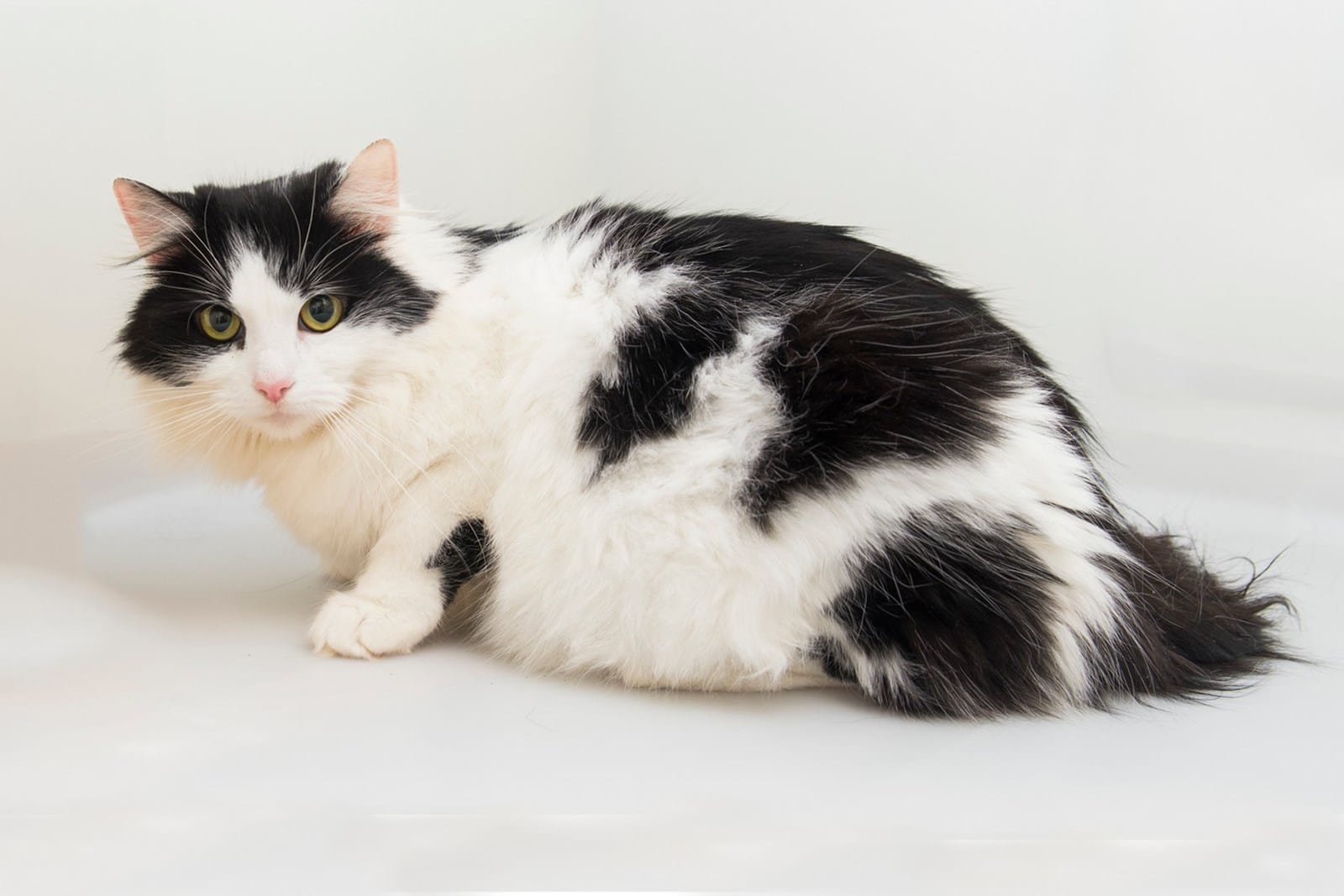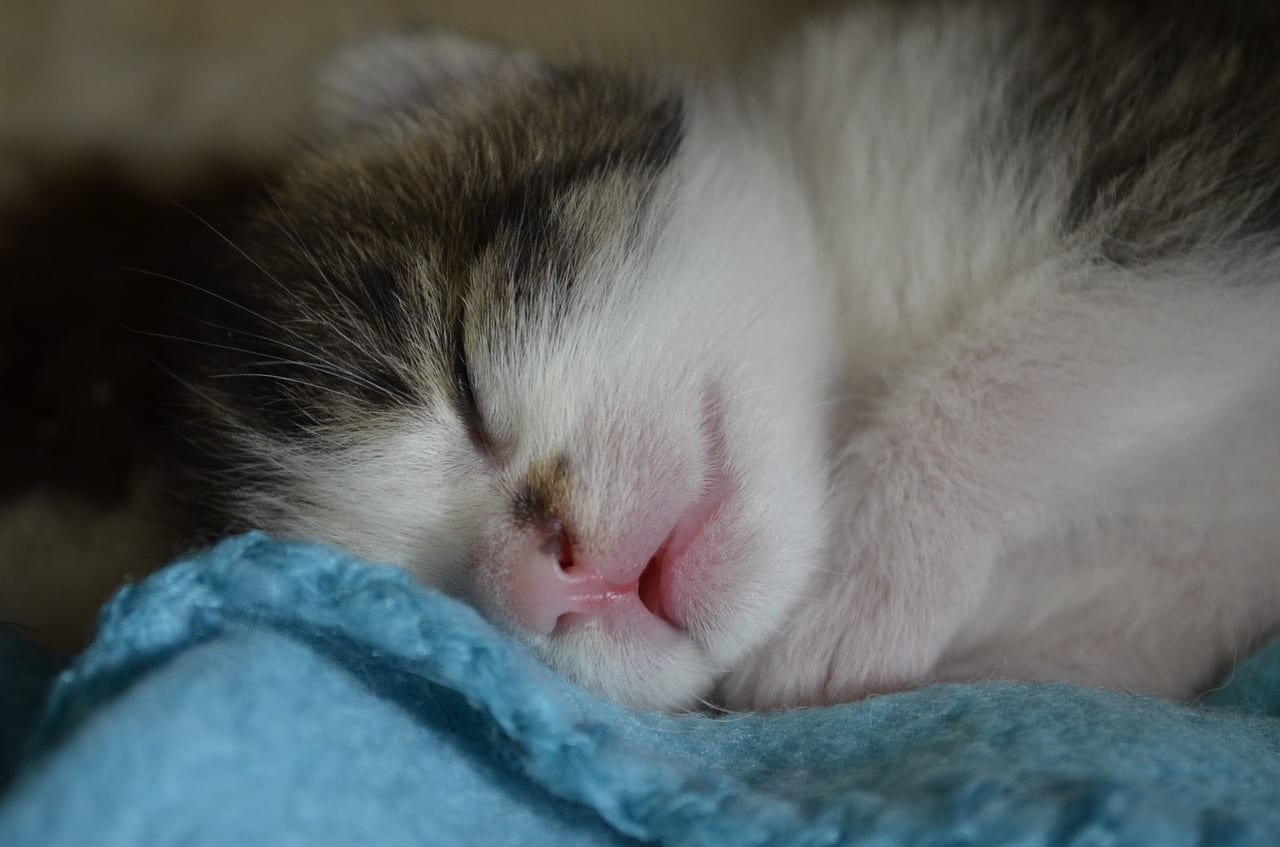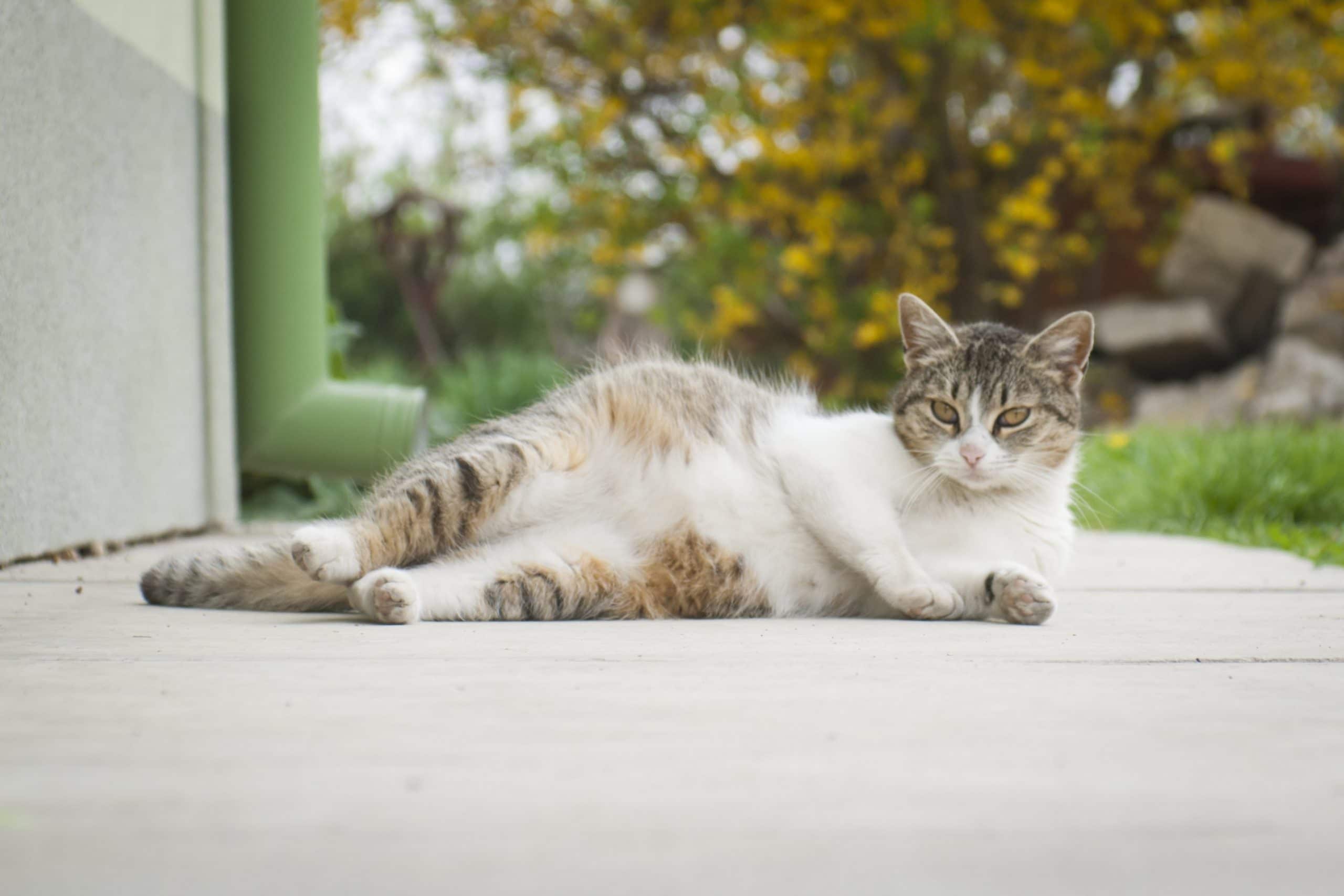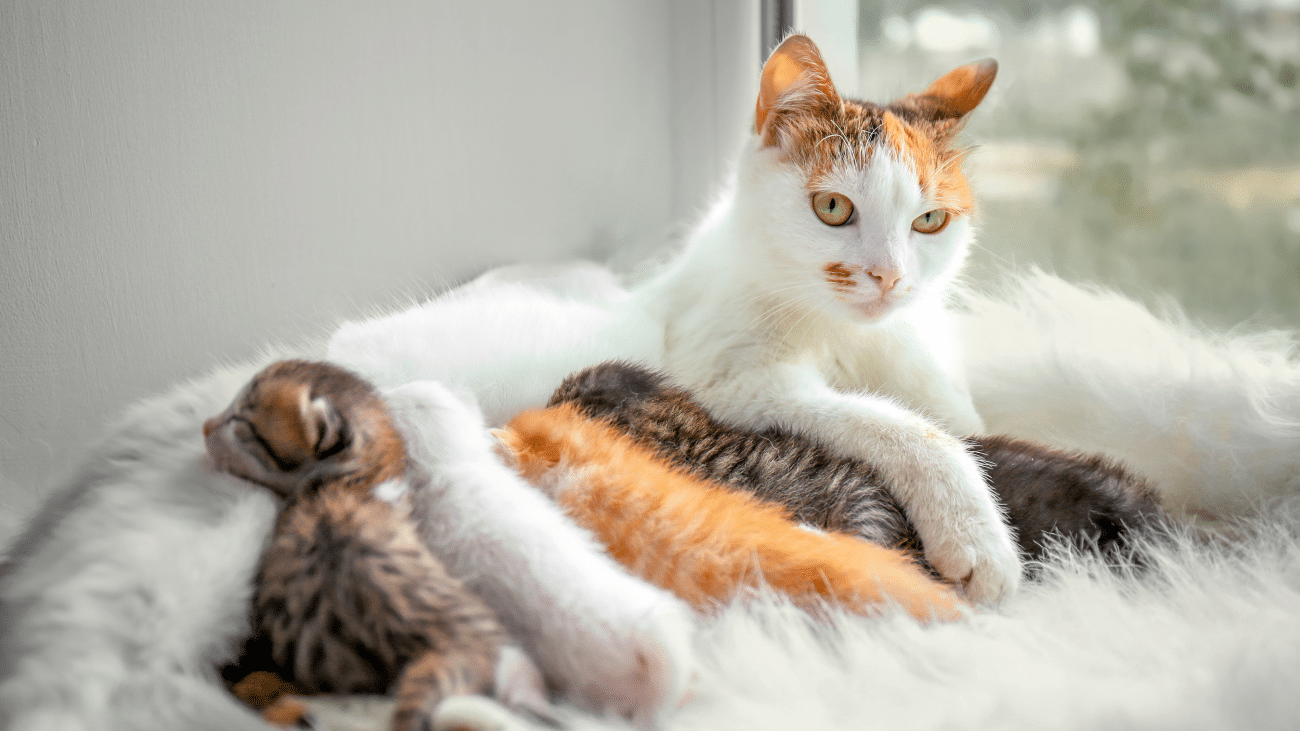
Cats are animals that can come into heat several times throughout the year, especially if the weather is mild. In fact, it happens very often that, when a cat is about to wean her puppies, she has already become pregnant again.
They are very prolific, so to avoid unwanted litters it is highly recommended to neuter or sterilize both the cat and the cat. Let's know what gestation time these furry have.
From the first moment in which the ovum is fertilized until the kittens arrive in the world, only 64 to 67 days pass. It is a very short trip during which the future mother cat will prepare to take care of her little ones until they are able to walk, eat and relieve themselves, which occurs at two months of age.
Five days after mating, the embryo travels to the uterus where it will latch on around day 12. Just eight days later, the beating of the hearts of the kittens in training can already be heard.
When the month arrives, the organs and muscles of the little ones are formed, who measure 5cm in length and weigh 7 grams, a weight that will double in the next 10 days. At this stage is when we can see how the cat feels more tired, she may even have nausea typical of her state. On day 35, the nipples will begin to swell in order to feed the kittens.
In the final stretch of gestation, the cubs will have an elongated shape by day 50, and they will move a lot. In fact, we can see how they kick and play while watching their mother's womb. Their organs and muscles will have finished growing, and their little bodies will grow the fur that should protect them for the rest of their lives.
By day 60, the puppies will be just over 10 centimeters tall and weigh between 90 and 100 grams. Five days later, the cat will go into labor and she will take care of the kittens until she comes into heat again.
Signs to know if your cat is pregnant
It can happen to any owner of a cat who goes outside or who spends time outside a house, such as a garden or patio through which male cats sneak in search of females. If your cat is not neutered, a single encounter with a male cat can result in pregnancy.
Cats are incredibly efficient breeders, so if you have a non-neutered cat that has access to male cats, she will most likely get pregnant twice a year. Even babies as young as four months old can get pregnant. But knowing if a cat is pregnant is not always easy, as the signs can be subtle. If you think your cat is pregnant, the best thing you can do is take her to the vet to find out.
A planned or unplanned pregnancy, all pregnancies should be discussed with your vet to make sure the mother and babies are healthy and well. A cat's pregnancy lasts nine weeks or around 63 days, as we have commented at the beginning of this post. In the first initial weeks, there are usually no external changes. However, once the changes start, you will notice them.
Is your cat pregnant?
Around three weeks there should be some noticeable changes in behavior and physical appearance. If you want to know if your cat is pregnant, these signs will be clear indicators.
Darker nipples
At around three weeks, a pregnant cat's nipples will darken and enlarge. Veterinarians call this sign "pinking." You may also notice a milky discharge from the nipples, although female cats don't start producing milk until after birth.
Morning sickness
Like humans, a pregnant cat can also occasionally go through a period of illness. Not all cats have morning sickness (like pregnant women!), But if you do, keep an eye on it and talk to your vet if vomiting becomes frequent or if your cat is unwell.
Swollen belly
Around 30 days, pregnant cats begin to develop a rounded and swollen abdomen, a sign that is not always so easy to detect.. If your cat is overweight to begin with, her bloating may be less noticeable, but she will still gain weight due to pregnancy. A pregnant cat will gain a total of 1 to 2 kilos in total, depending on the number of kittens.
Nesting
When a cat is around two weeks pregnant, she will often begin to nest. She will choose a quiet place to start organizing blankets or fabrics to use for the delivery. The cat may also begin to act more motherly, be more loving to you, and purr more often. At the same time, you may become less tolerant of other pets or animals.
Positive ultrasound
The best way to know if your cat is pregnant is to visit your vet and get an X-ray or ultrasound. X-rays do not show kittens until 40 to 45 days when kitten skeletons are visible. Ultrasounds can be done as early as 21 days, but it is often difficult to count the number of kittens present with an ultrasound, compared to X-rays.
Don't worry about using an X-ray on a pregnant cat. The amount of radiation is quite small, so an X-ray is generally considered safe for developing kittens.
How to know if your cat is in labor
The big day has arrived, so what do you need to do? This process is technically called "queen". Chances are you don't need to do anything to help with the birthing process, except be with your cat to motivate her. You may even wake up in the morning to find that your pregnant cat has given birth on her own and is already nursing her little kittens.
However, you do have to know how to spot potential problems and what steps to take, in case you need help with the birthing process.
Signs of impending labor
These signs will tell you that your cat is in labor:
- Nesting: A day or two before giving birth, your cat will look for a quiet and safe place to have her kittens. You can try preparing a birthing area for her with a cardboard box or laundry basket lined with towels or blankets. However, your cat may choose something completely different.
- Behavior changesThese include restless pacing, panting, excessive grooming (especially in the area of your genitals), and excessive vocalization.
- Physical signs of labor: There may be a drop in normal body temperature. The cat may vomit. The abdomen may "sag" a few days before delivery, and the nipples may become larger and more pink.
- Active labor- Contractions will begin and you will see the appearance of the amniotic sac. You may also see a discharge of blood or other colored fluid.
What do you need for the delivery area

- Absorbent pads
- Clean towels to help clean and stimulate kittens if needed
- Paper towels for the same purpose
- You may need an extra box to place the kittens while the mother cat is still in the birthing process.
- Place a heating pad in the bottom of the box with a blanket or several towels over it. The idea is to prevent the kittens from getting cold, without burning them. Never place them directly on a heating pad. Lay another clean towel on top of the box to contain the heat and prevent drafts.
- A laundry basket or extra box to dispose of dirty towels.
In the deliveries of cats there may be complications, in these cases, it is necessary that you take it into account because you may have to call the emergency room Visit the vet to help your cat have a safe delivery. There may be internal bleeding, a kitten being trapped in the birth canal, dead kittens being born ... The problems can be many and varied and it is important to have the vet's phone number at hand to help your cat to make sure everything goes well. .

